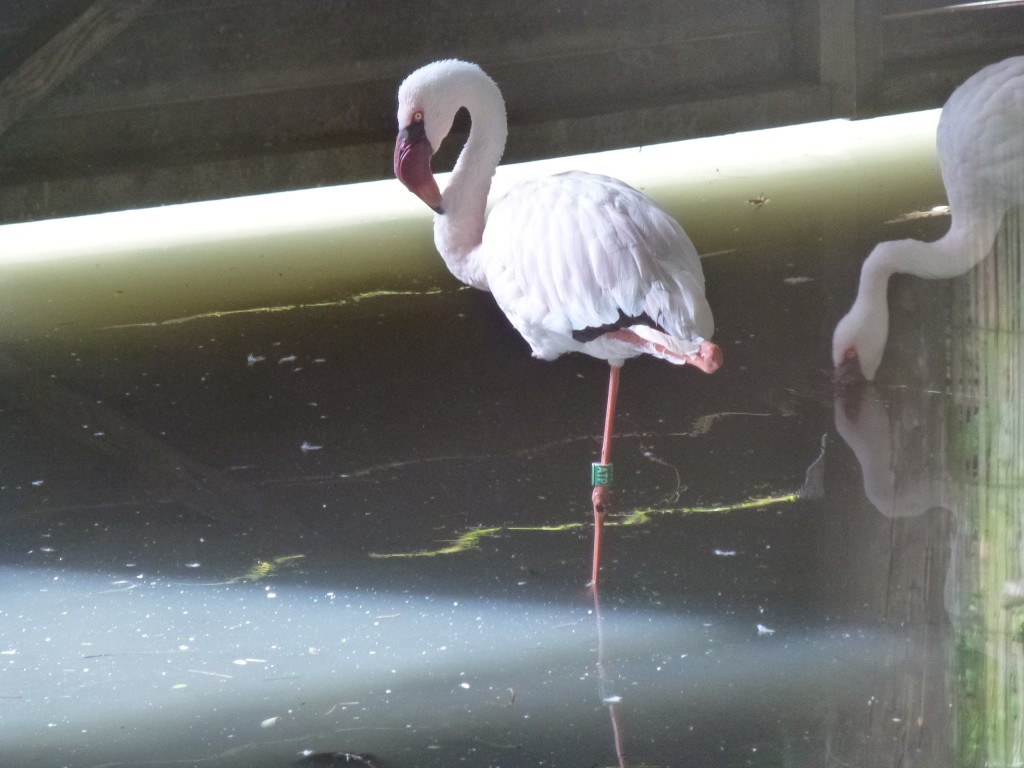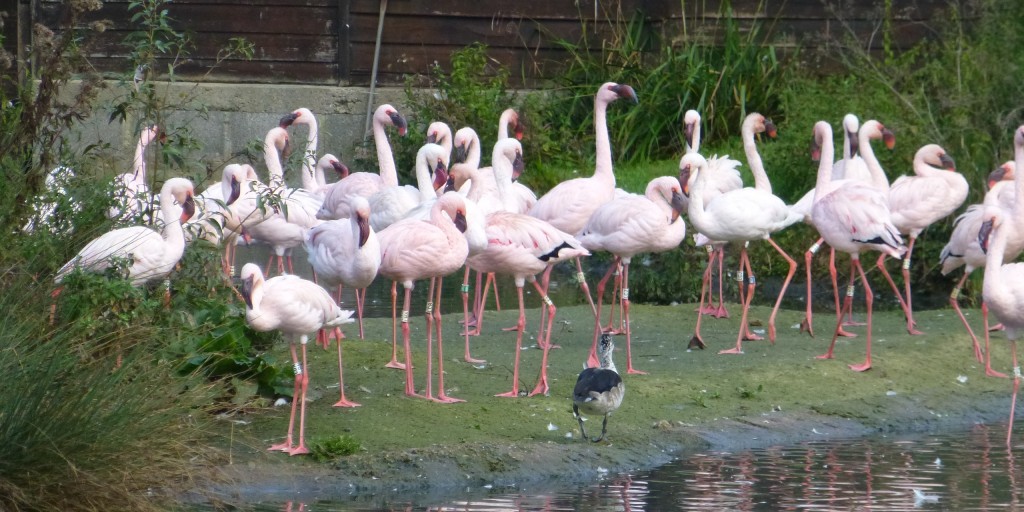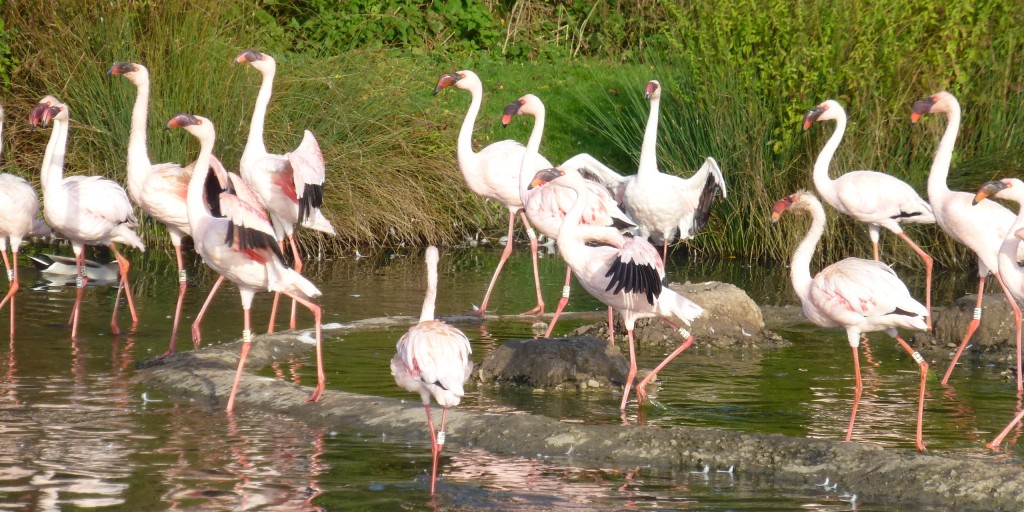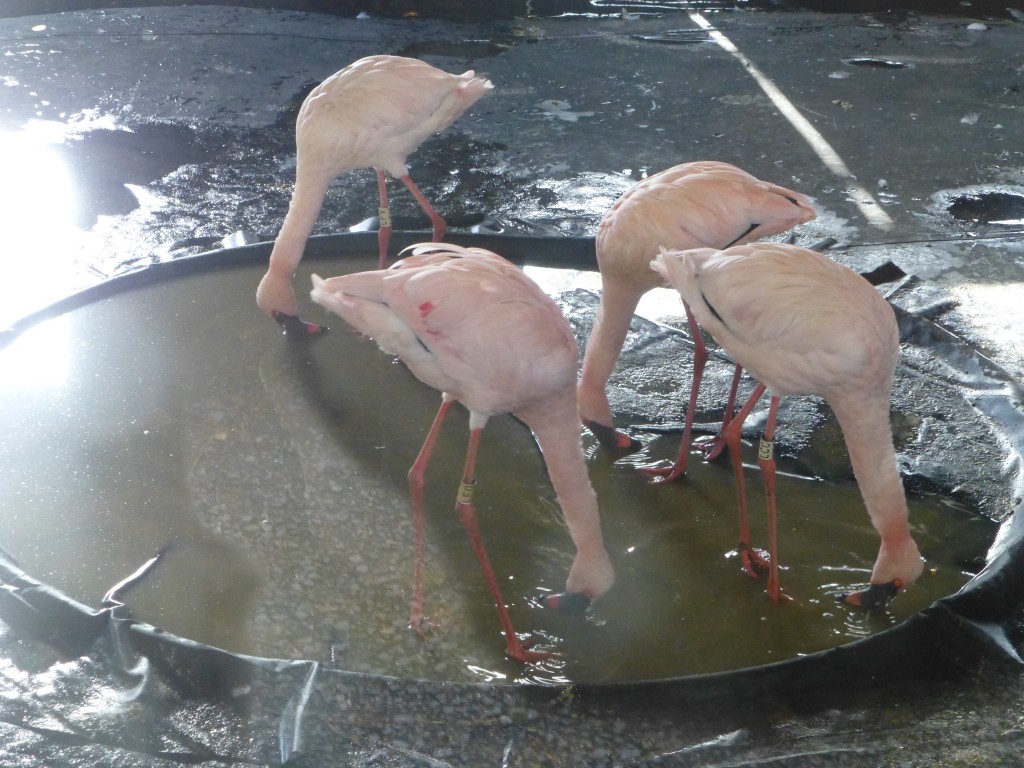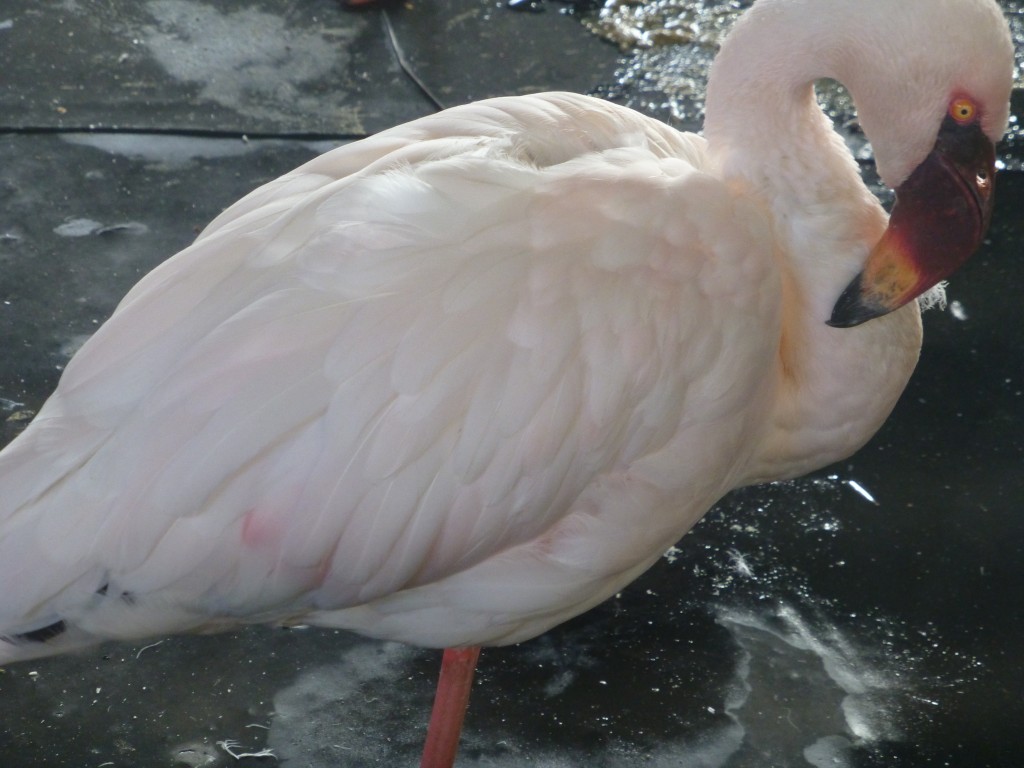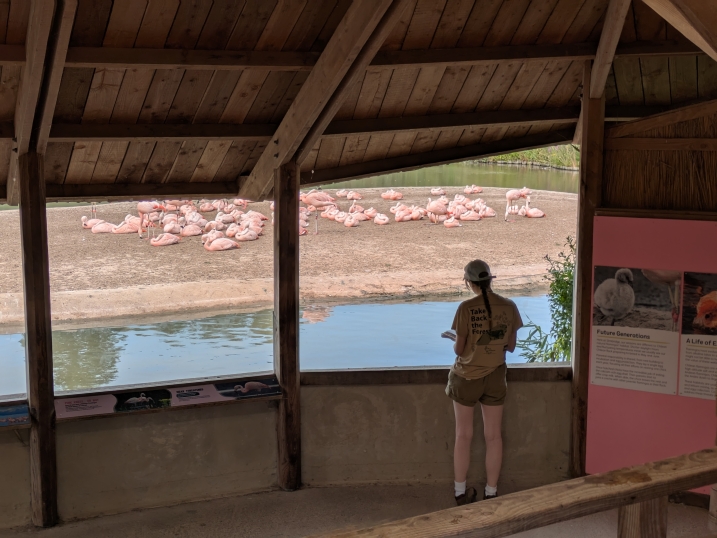New birds into the lesser flamingo flock
In my last post, I mentioned exciting developments in the flock of lesser flamingos at WWT Slimbridge. At the end of September 2014, five new birds arrived into the group of roughly 40 adults; a welcome addition to this flock that has bred successfully in the past and attempts to nest build almost every year.
Inside for the first few days after their arrival, five new lesser flamingos settle in to their new home at WWT Slimbridge.
I have been following the arrival of these new birds closely as it provides a rare opportunity to study the impact of brand new "outsiders" on the structure and dynamic (the way the group works) of an established flock. We can follow the individual behaviour of the Slimbridge flamingos from their leg rings. The new birds have red, or blue, or green legs rings and hence stand out quite easily from the black and white rings used as standard by WWT. The new birds look like (but this is just a guess) as three males and two females. Stay tuned for more news of their exploits as they settle in.
Spot the new birds? They have brightly coloured Darvic (plastic leg rings) when compared to the original members of the flock.
Over the next months, it will be interesting to see what role these new birds play in the group. Are there any strong personalities that take charge and influence the behaviour of the other birds? Or are they more likely to wait in the side-lines and go with the flow? The hustle and bustle of a flamingo flock is influenced by many strong individuals, and these characteristics can take time to surface. As these five birds are easy to spot, it should be fairly straight forward (he says!) to see how their personalities appear into the next summer and breeding season.
Who does what in the flamingo flock? Even though it's October and slowly tuning winter, the lesser flamingos still get a bit of an urge to do their famous dance. Hopefully the new arrivals will get involved in this courtship display too. Can you see any of the new birds joining in?
The avics at Slimbridge have designed a rather clever indoor feeding station for the lesser flamingos. As these birds like to filter in shallow water, across a wide area, giving them a large circular feeding area where they can forage for their pellets allows the flamingos to indulge in their natural behaviour patterns and keeps them happy and content. See a short video clip below.
']
New feeding bowl for the lesser flamingos at WWT Slimbridge allows the birds to feed naturally even when the weather means they need to be kept in their house.
Phil, Sparky and co. put in a great deal of time and effort with this flock of birds. Lesser flamingos are special animals; they are less robust than the bigger species and hence really benefit from a bit more TLC. A species at the very heart of what WWT does, the lesser flamingo is a species that WWT's conservation work focusses strongly on. I have mentioned previously that WWT scientists are helping to write their conservation strategy and are actively encouraging close cooperation with zoo-based and wild-based organisations to help preserve this species into the future. So be sure to go and check out the story of the lesser flamingo on your next visit to Slimbridge. And say hello to the new birds too!
